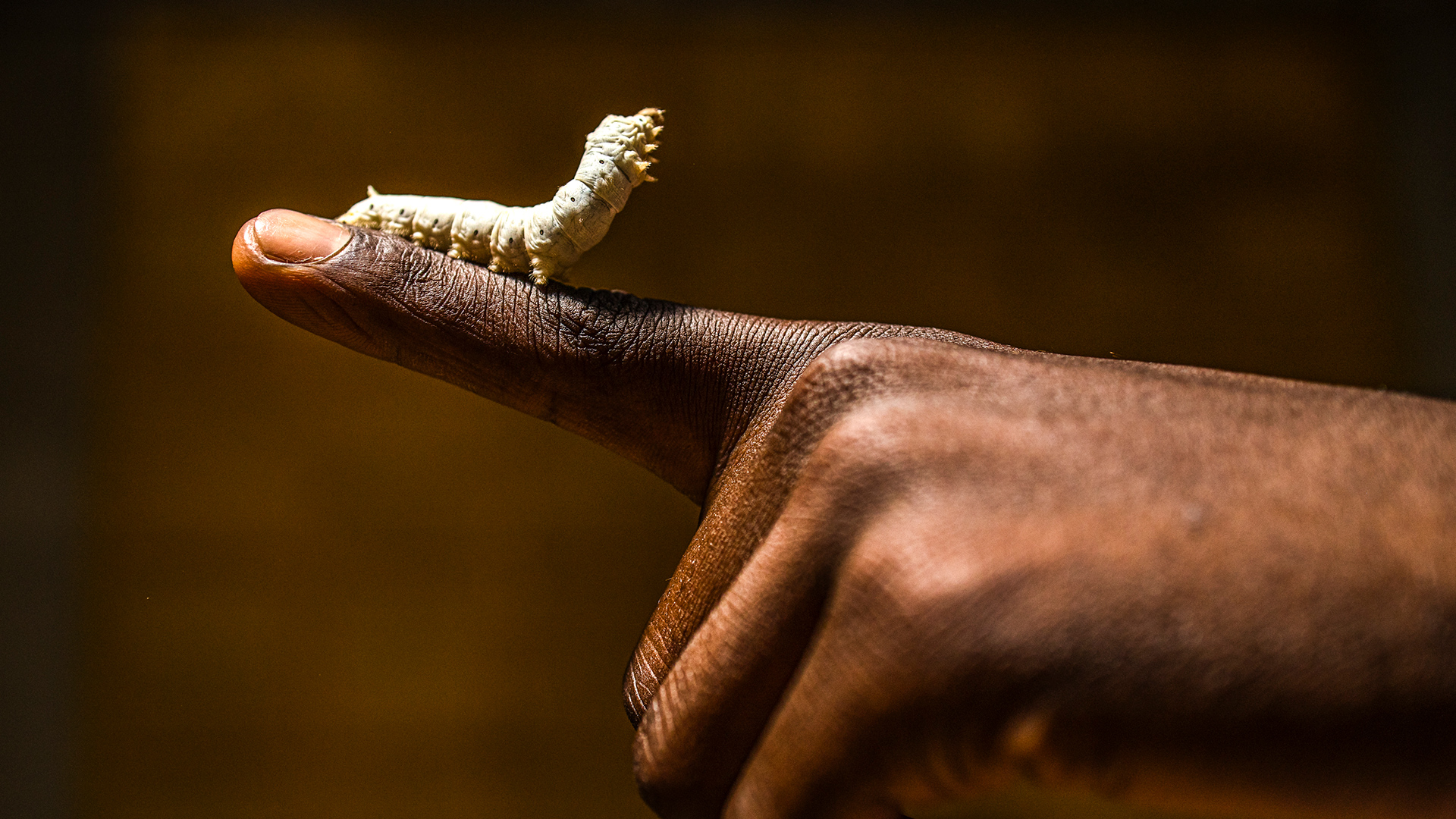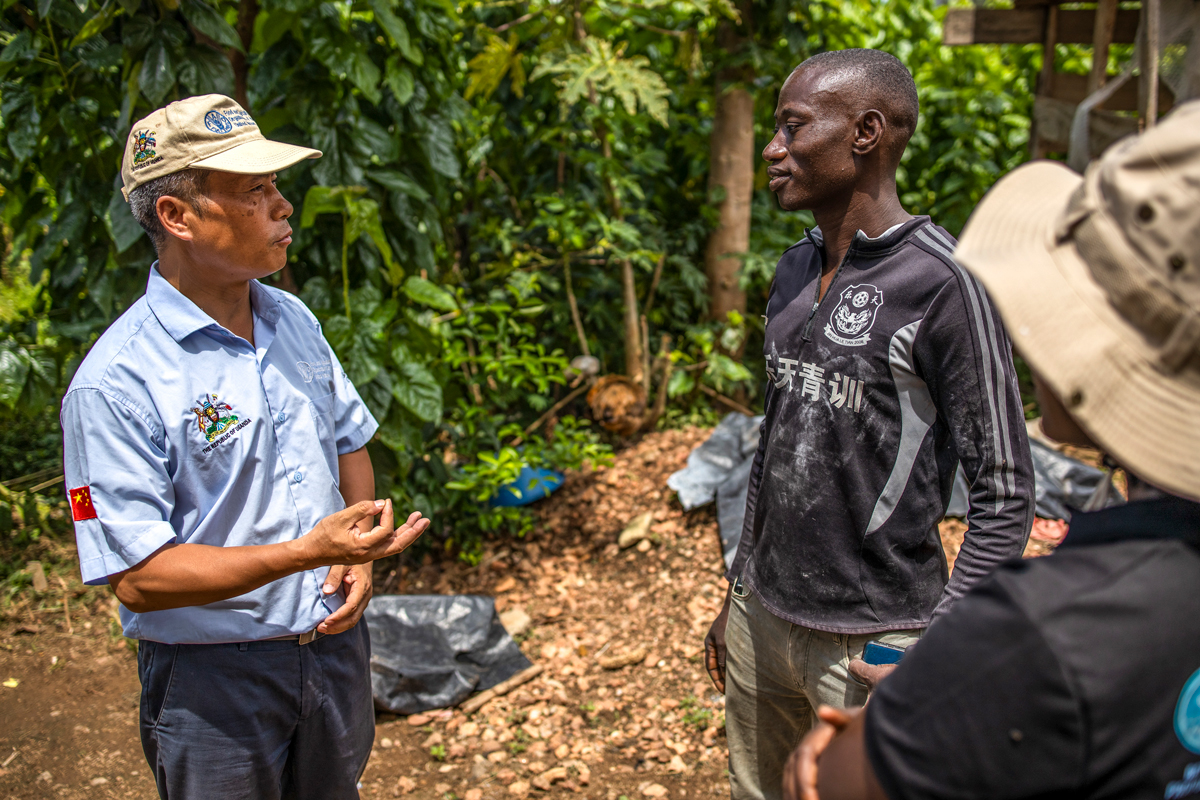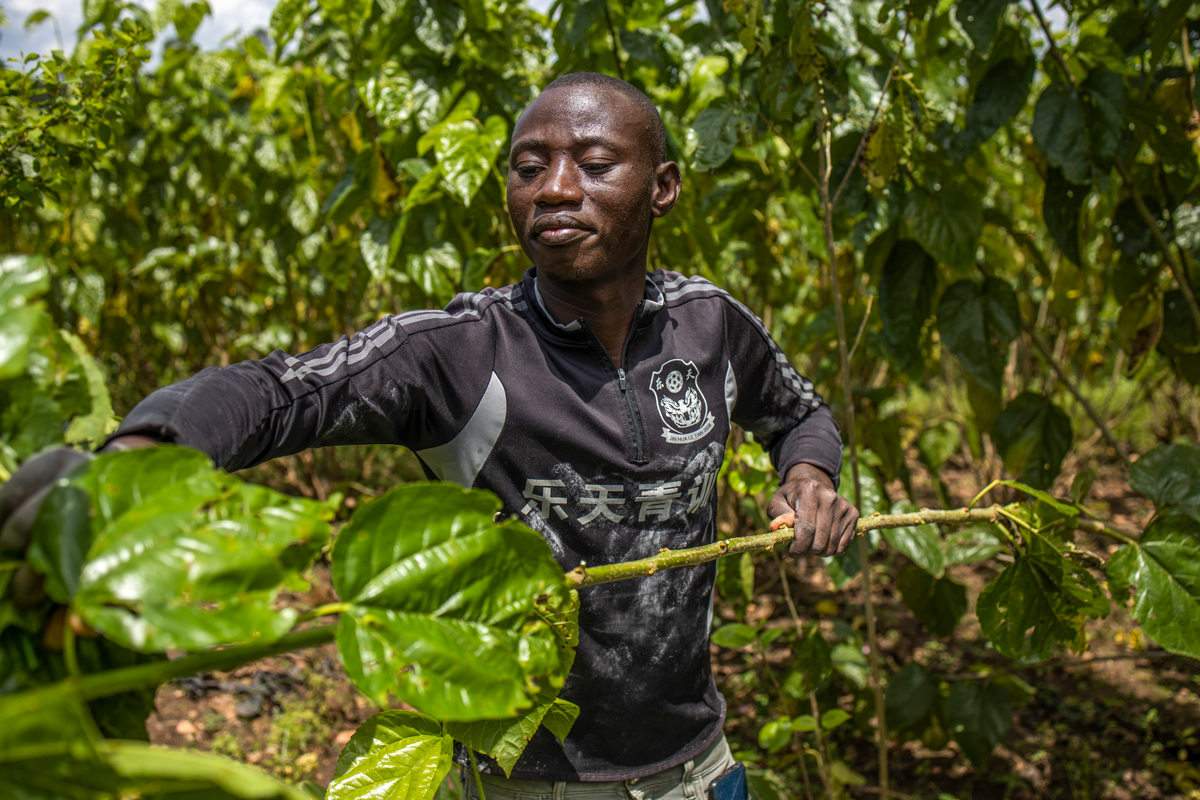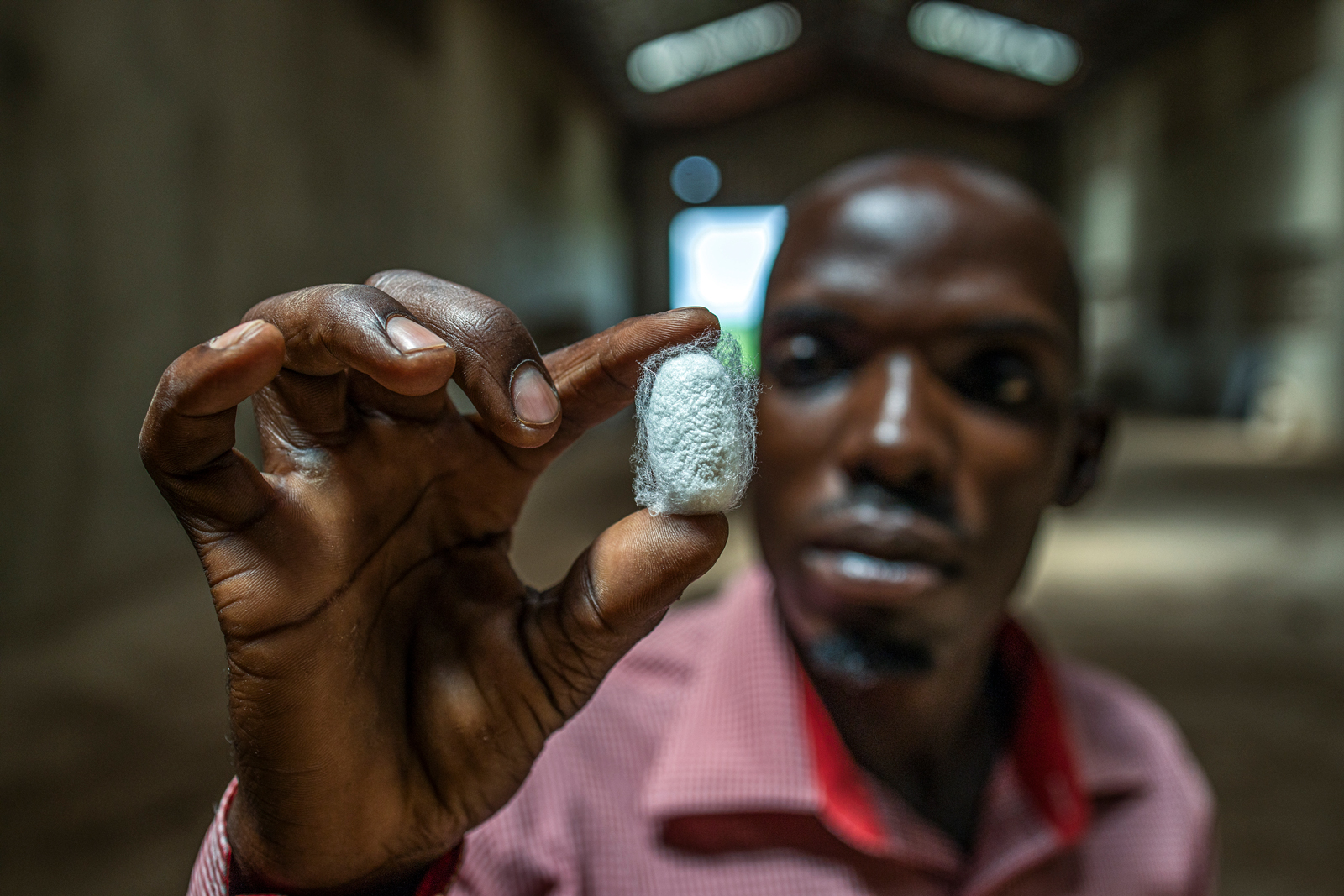
Out of its cocoon
FAO-China-Uganda South-South project creates new farming opportunities in sericulture
Silkworms produce the cocoons from which the silk thread is produced. ©FAO/ Stuart Tibaweswa
10/04/2025
Nestled in the lush hills above the northern shores of Lake Victoria, a new industry is emerging from its cocoon. Waiswa Aggrey Mubeerwa, its young manager, is waiting for it to mature so that he can start sending its products to distant markets.
Waiswa was hired by the Seres Textile Company Limited to oversee its silk farming facility in Mukono, a district in Uganda about an hour's drive east of the capital, Kampala. Built in 2019, the company's huge warehouse stores a growing number of silkworms and cocoons. Waiswa is waiting for an extracting machine so that Uganda's silk-exporting business can begin.
Sericulture is just one of the many initiatives of a South-South Cooperation (SSC) project implemented by the Food and Agriculture Organization of the United Nations (FAO) in collaboration with the Government of Uganda and the Ministry of Agriculture and Rural Affairs of China.
Uganda offers the ideal temperature and humidity for growing mulberry trees, whose leaves are the only food silkworms will eat. In addition to a few acres of land to plant the trees, a farmer starting a silkworm business will need wooden rearing beds for the silkworms and a warehouse capable of maintaining the indoor temperature at around 27 degrees Celsius.
Once the mulberry trees have grown and the silkworm larvae have been acquired, a lucrative business can begin: A kilogram of silk can easily fetch USD 50 in China. In fact, local farmers can earn up to 10 times what they would earn growing traditional crops such as maize.
By the end of 2024, the project had distributed approximately 200 000 mulberry cuttings to 35 farmers and had trained 44 farmers in the art of producing the cocoons from which silk is spun. This training involved guiding farmers through the larvae’s growth stages, providing feeding advice and giving information on the importance of maintaining a clean and well-ventilated environment.


Uganda offers ideal conditions for growing mulberry trees, whose leaves are the only food silkworms eat. ©FAO/ Stuart Tibaweswa
One of the first Ugandans to take advantage of this new opportunity was Wambedde Simon Waluba, a 24-year-old graduate from Makerere University in Kampala, whose family owns 14 acres of prime mulberry land.
The land had been unproductive for years, but he spotted an opportunity when he heard about mulberry trees and silkworms.
The eldest child in a family of four brothers and four sisters, Simon studied Social Sciences because he dreamt of becoming a manager or working for a non-governmental organization. But when his family hit on hard times, he decided he would do anything he could to help.
"They told me I can make good money out of this business. I needed to find ways to help my family financially; that's why I got interested in this business," he says.
Simon was then trained by Waiswa Aggrey, the Seres Textile Company’s young manager, who in turn was trained by the silkworm experts sent from China as part of the SSC project in Uganda.
Through the project, Simon received mulberry seeds and two boxes of silkworm eggs and was shown how and when to grow the trees and feed the silkworms the mulberry leaves. He has now been supplying silk cocoons to the company since 2020.
Like Simon’s, dozens of silkworm farms are sprouting across Uganda, with the FAO-China-Uganda SSC project providing assistance in procuring the worms and the necessary technical knowledge required to nurture the silkworm cocoons from which the silk will be made.

With silkworms, local farmers can earn up to 10 times what they would earn growing traditional crops such as maize from the same plot of land. ©FAO/ Stuart Tibaweswa
South-South Cooperation
The FAO-China-Uganda South-South Cooperation (SSC) project is designed to increase the productivity of Ugandan farms by providing farmers with training, technology and technical assistance in a wide range of areas, from aquaculture to sericulture, crop production to animal husbandry.
With more than 70 percent of the population dependent on agriculture, either directly or indirectly, transforming the sector - from subsistence to commercial - is crucial for uplifting many out of poverty, says Peter Muyimbo, Assistant National Project Coordinator at Uganda’s Ministry of Agriculture, Animal Industry and Fishery.
The SSC project has also boosted Ugandan productivity in other agricultural areas, including poultry, animal husbandry, rice, foxtail millet and fisheries production, with remarkable success. It originally planned to reach 9 600 beneficiaries. However, 70 000 farmers across Uganda have already benefitted from the project, either directly or indirectly.
By bringing together FAO, China and Uganda, the SSC project “contributes to food and nutrition security, creating decent jobs and improving the livelihoods, especially of the marginalized, women and youth,” Peter says.
This SSC project is now the longest-running under the FAO-China South-South Cooperation Programme, with China loaning a total of 56 agricultural experts to Uganda since 2012.
Related links
Learn more
- Website: FAO & South-South and Triangular Cooperation
- Website: FAO country profile: Uganda
- In-depth story: Rice-fish farming in the Land of Milk and Honey
- Photos: FAO Media Hub

